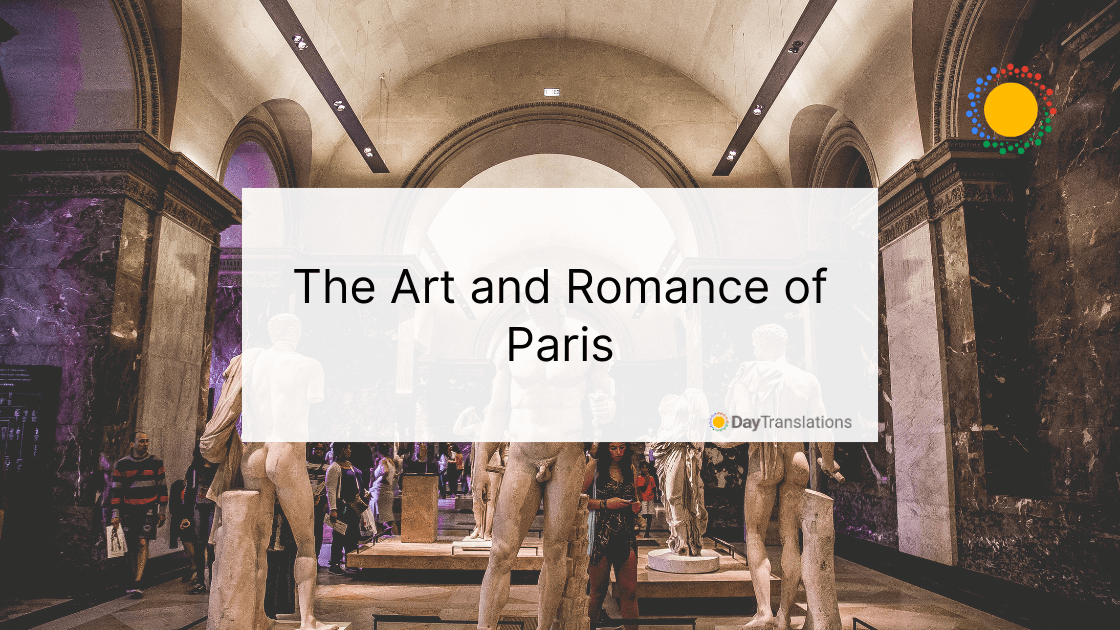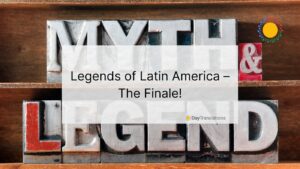Known for being the most romantic city in the world and for its art, cuisine, culture, architecture, history and fashion, Paris is France’s capital as well as its most populous city. It is commonly referred to as La Ville Lumière or “The City of Light,” not just because it was one of the first cities in Europe to use gas street lighting, but also because Paris played a leading role in the Age of Enlightenment.
The seat of the national government of France is in Paris. The French Republic’s President resides at the Élysée Palace, the Prime Minister stays at the Hôtel Matignon, while other government officials are located in different parts of the city.
Art and Culture
Every year, Paris attracts millions of tourists who visit the Louvre, which houses the Mona Lisa and the Venus de Milo and the Musée d’Orsay. The museums that house them are two are the most visited art museums in the world.
It is not surprising why the city has also acquired its reputation as the “City of Art.” For centuries, artists find their way to Paris to learn from its artistic resources and to seek inspiration from the galleries and the city itself. Artists from the 16th and 17th centuries have also greatly influenced the artistic charm of the beautiful city.
Historical Architecture and Urbanism
Unlike many other capital cities, not just in Europe but around the world, Paris has never been destroyed by war or other catastrophes, allowing its structures to remain intact. Since the Middle Ages, French rulers have made it a point to create something to leave a legacy or their personal mark in history. Because of this, the timeline of Paris throughout the centuries can be observed through its marvelous architecture. Even the oldest infrastructure can be seen in the street maps.
Ever since the 17thcentury, laws on urbanism have strictly controlled development, particularly with the alignment, height, and distribution of the buildings.
Parisian architectural designs date back to more than a millennium. Notable examples include the Abbey of Saint-Germain-des-Prés, Basilica of Saint-Denis, the Notre Dame Cathedral, Sainte Chapelle, L’église Sainte-Marie-Madeleine, Palais Garnier (Opera House), Basilica of Sacré-Cœur, and the Eiffel Tower, among others. These are a few of the most prominent structures around Paris with designs that span from Romanesque to Gothic, neoclassical, neo-Byzantine and up to the modern styles of architecture.
Did you know?
- Parisian law dictates that no building in the city should be higher than six stories. The reason for this is for all to have sunshine or in French, “pour que tout le monde ait du soleil.”
- Bastille Day is observed in Paris every July 14. In 1789 the Bastille prison was stormed for the purpose of freeing the political prisoners held there. However, when it was stormed only seven prisoners were there but none of them were political prisoners. Four of the seven prisoners were guilty of forging checks.
- The Latin motto of Paris is “Fluctuat nec mergitur.” In French, it is “Il est agité par les vagues, et ne sombre pas” or “She is tossed by the waves but does not sink” in English. It is shown in the city’s coat of arms.
- The model for Britain’s sleek sleuth James Bond was Wilfred “Biffy” Dunderdale, a real spy from M16 stationed in Paris. He was a friend of Ian Flemming and most of his stories got included in the author’s James Bond books.
- Les UX is a clandestine group the breaks into historical monuments and sites in Paris repeatedly in order to repair them in secret. They also stage surreptitious art events and have built underground cinemas. They were responsible for the repair of the Panthéon clock.
Language
French, a Romance language and a descendant of spoken Latin had been the official language of the French Republic since 1922. It is mandatory that official publications of the government, advertisements, legal contracts and public education should be conducted in French.
However, in 1793 when the French Revolution started, 75 percent of the citizens in France did not even speak French but rather their own dialects and until the 19th century, it was more widely spoken in Germany and Holland than in France. The language spread worldwide, and about 50 percent of the English words today originated from French, which was the official language of England from 300 years.
It is the only language that is taught everywhere in the world along with English. There are about two million Americans whose mother tongue is French and more than 11 million Americans speak the language fluently.
French is an official language in 29 countries and also an official language of the United Nations. By the way, did you know that in Kinshasa, which is the Democratic Republic of Congo’s capital, there are 10 million French speakers? This makes the city the second largest French-speaking city outside of France. Moreover, five million people in Abidjan, Côte d’Ivoire speak French, while there are four million French speakers in Montreal, Quebec.
French, which is the fourth most-spoken language in the U.S. according to the 2011 census, is the second most spoken language in Louisiana, New Hampshire, Vermont and Maine.
Fun and Interesting Facts about Paris
- Statue of Liberty. New York’s Statue of Liberty was a gift to the United States from France. Likewise, there is one in Paris that faces its American counterpart. This symbolizes the friendship between the two nations.
- Zidane Headbutt Statue. World-class football legend Zinedine Zidane was infamous for head-butting Italian opponent Marco Materazzi in the 2006 FIFA World Cup Finals. That moment was immortalized by an oversized bronze statue sculpted by French-Algerian artist Adel Abdesseme and is now found in Doha at the Arab Museum of Modern Art.
- 9 Michelin three-star restaurants. As of 2015, France has a total of 29 Michelin-rated restaurants, with 9 in the capital city. This is the second highest in the world, next only to Tokyo.
- Rome’s sister city. Rome and Paris consider each other as exclusive sister cities, as the two are among the richest capitals in terms of culture, history, art and many more.
- The Louvre was originally built as a palace. It was a fortress in the 12th century, became a residence of Charles V in the 14th century and Francois I’s chateau in the 16th century. It opened in 1793 as an art museum. Renovations and extensions took 666 years to complete, and the famous museum is now home to more than 35,000 pieces of artwork.
- Plaster of Paris. As the name suggests, the cast used for broken parts of the body was invented in Paris. It was used for sculptures and other works of art.
- Even the sewer system is toured. Engineers improved the system during the modernization of Paris. During the exploration, interesting things were discovered and public tours were started by wagon, then by boat, and now, it can be toured on foot.
- Catacombs filled with bones. Due to overcrowding and sanitation issues of graveyards, catacombs were created about two centuries ago. Bones were blessed then transferred by carts and eventually arranged into stacks in mines 20 meters under the city. The Catacombs of Paris are part of the city’s museums.
- The Eiffel Tower was not meant to be permanent. Built for the World Fair of 1889, the iconic monument was meant to be taken down but was deemed as an importation radiotelegraph station by the officials of the city. While it carries the name of the company owner that built the tower, Alexandre-Gustave Eiffel, the concept and fine tuning of it was created by Maurice Koechlin, the construction company’s structural engineer.
- The Pont Neuf is the oldest bridge over the Seine. In French neuf means new. Pont Neuf, despite its name is the oldest bridge in Paris, the first one to have separate pavements for vehicular traffic and pedestrians and the also the first bridge built that did not include houses. It began construction in 1578.
Famous People from France
- Napoleon Bonaparte. First emperor of France and military general whose genius changed the world in terms of leadership, military organization and training. He received his education at the Military Academy in Paris.
- Savinien Cyrano de Bergerac. French playwright and author known for science fantasy and political satire. He is also the Edmond Rostand’s subject in his play Cyrano de Bergerac.
- Voltaire. Philosopher, historian, and one of the greatest writers during the period of French Enlightenment.
- Pablo Picasso. While he was born in Spain, the painter moved to Paris to open his studio and create art.
- Victor Hugo. Poet, playwright, and author celebrated for his novels, which include Les Misérables. He was given a hero’s funeral upon his death, with his body laid beneath Arc de Triomphe before he was buried in the Panthèon.
- Claude Monet. A famous painter who paved the way to Impressionism – a technique that focuses on light and natural forms.
- Théodore Rousseau. One of the founders of the “Barbizon School,” an art movement that moved from Romanticism to Realism in the 19thcentury.
- Jean-Paul Sarte. 20thcentury intellectual, philosopher, journalist, activist, academic, author, and literary critic who pioneered ideas focusing on existentialism. He was awarded a Nobel Prize in Literature in 1964, but he refused to accept it.
- Blaise Pascal. Philosopher, physicist, scientist, mathematician, and theologian who laid the foundation for the theory of probabilities.
- Julie Delpy. Television and film actress, director, and screenwriter who’s famous for such films as Before Sunrise, Before Sunset and Before Midnight and 2 Days in Paris.
- Emma Watson. Actress popular for her role as Hermione Granger. She’s a model and an activist. She was born and raised in Paris until she was five before moving back to England.
- Christian Louboutin. Fashion designer known for the distinct footwear with red soles.
Visiting Paris could be a lifetime dream fulfilled. The best time to visit this beautiful city is between April and June or from September to October. Try to learn some useful words and phrases in French before your trip. And instead of bonjour and au revoir, say salut, which could either be hello or bye, and could be said any time of the day.











